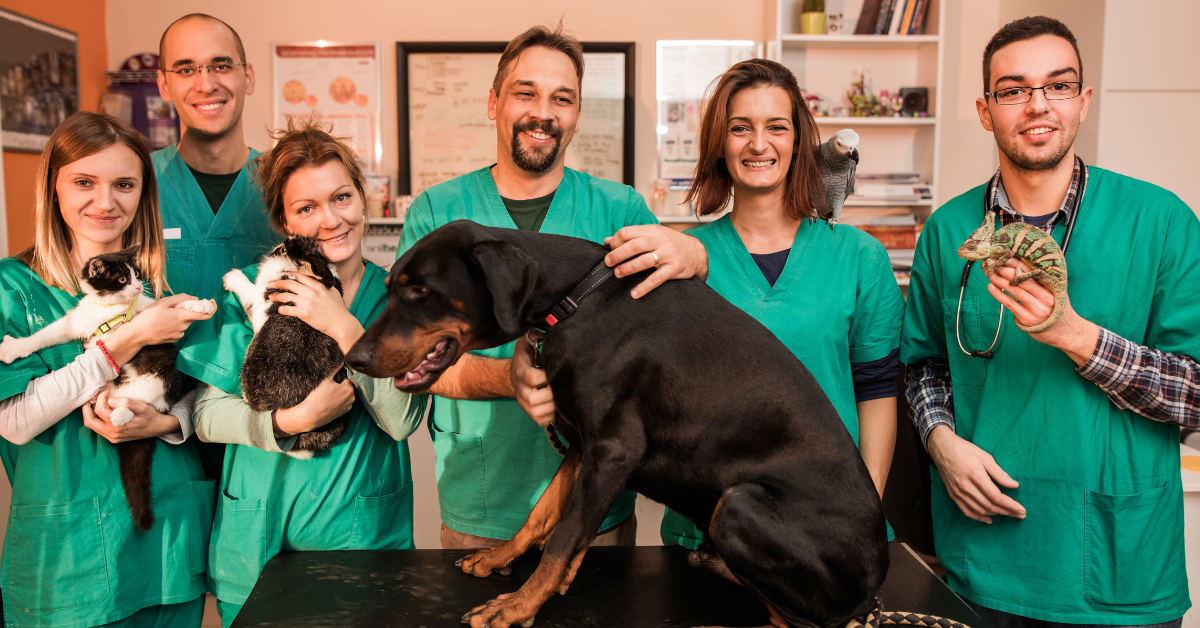In part 1, we covered some common new technologies that are being integrated into many veterinary practices—including cloud technology, telemedicine, and apps.
Today, we’d like to take it a step further and discuss some new and evolving tech that may help you provide great patient care and customer service in totally new ways.
Here are some technologies to think about…
Pet Wearables
There are now devices available for pets that can monitor body temperature, heart rate, respiration, and more.
Often, this would be something pet owners purchase and use at home, similar to a FitBit. This technology may help pets with medical issues (such as tracking a resolving fever or monitoring exercise in overweight pets). Or it may help with something as simple as seeing true TPR values when a pet is at home and relaxed versus at the clinic and stressed.
Another thing to consider is the possibility of having these devices at your clinic, for a low-stress way to get a TPR during a pet’s visit.
You’ll have to decide for yourself the practicality and dependability of this relatively new pet trend—but the possibilities are certainly exciting!
Live or Visual Information Sharing
Times have changed from the days of placing x-ray films on viewers in your exam rooms for clients to look at (and reserving the room with the “best” x-ray viewer for that specific client!).
Don’t get us wrong—this traditional technology can still get the job done. But how much more convenient and interactive would it be to share digital info and images on large, flat-screen monitors that you have in each of your exam rooms?
This digital, high-depth technology looks impressive to clients. And even when you’re not using a monitor to present patient information, you may want to have informational pet care videos playing to keep clients entertained while they wait (and also promote some of your services).
Plus, there’s an opportunity for live sharing when clients can’t be in the room with their pets.
One example would be cameras mounted on the ceiling for live and convenient sharing of patient updates, bloodwork, ultrasound findings, etc. Even some microscopes can connect to Wi-Fi.
This type of visual, real-time sharing maybe even more relevant until pandemic restrictions are lifted…
Since clients can’t always accompany their pets into the clinic, this can help them feel like they’re still connected. Instead of worrying about the “unknown” (i.e. what happens when their pet is taken to “the back”), clients can see some of what’s happening during an exam or other procedures. This may provide mental comfort, confidence, and trust.
3D Printing
According to the University of Illinois College of Veterinary Medicine, 3D printing can help surgeons plan and practice a surgery ahead of time, via models of bone that are created based on CT scan images. Printers can also replicate muscles, blood vessels, and other organs for this purpose.
In addition to a veterinarian’s use for surgical planning, 3D printers can create models for client education purposes.
Encourage Clients to Use the Tech in Their Phones
While not considered new or ground-breaking anymore (since most of us have had smartphones for some time now), simple features on a phone like a camera or voice memo can be immensely helpful during a visit.
For example, if you’re going over bloodwork results, encourage a client to record what you say—that makes it less likely their spouse (who wasn’t at the visit) will call and want you to go over all the results a second time.
Or if your team is demonstrating how to clean a dog’s ears, have the client record it so they can replicate the process at home.
Choose What’s Right for You
If you’re just opening your own veterinary practice, it might be worth it to invest in new technology right from the start—to help set your clinic apart from the competition, and to customize your practice so it suits your workflow, communication style, and the type of medicine you’d like to practice.
It may also be practical to start with just a couple of new technologies at a time—to save some expenses when first opening a practice, and to wait and see what other new technologies are developed in the meantime until you’re ready to invest again.
Either way, it’s certainly valuable (not to mention fun) to start “dreaming” about how you want your veterinary practice to look and function.
Dreaming is the first stage of planning—and imagining what sorts of tech you’ll use in your veterinary practice can help you bring your dream to life.
Written by: Dr. Tammy Powell, DVM



